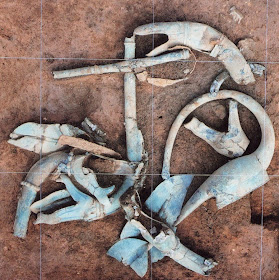Zoologist Matt Ridley, more recently a writer for the Economist, believes in progress in a big way, and he
is sick of doomsday talk:
Rational optimism holds that the world will pull out of its economic and ecological crises because of the way that markets in goods, services and ideas allow human beings to exchange and specialise for the betterment of all. But a constant drumbeat of pessimism usually drowns out this sort of talk. Indeed, if you dare to say the world is going to go on getting better, you are considered embarrassingly mad.
If, on the other hand, you say catastrophe is imminent, you can expect a MacArthur Foundation genius award. In my own adult life I have listened to solemn predictions of growing poverty, coming famines, expanding deserts, imminent plagues, impending water wars, inevitable oil exhaustion, mineral shortages, falling sperm counts, thinning ozone, acidifying rain, nuclear winters, mad cow epidemics, Y2K computer bugs, killer bees, sex-change fish, global warming, ocean acidification and even asteroid impacts that would soon bring our happy interlude to a terrible end. Let me make a square concession at the start: the pessimists are right when they say that if the world continues as it is it will end in disaster. If all transport depends on oil, and the oil runs out, then transport will cease. If agriculture continues to depend on irrigation and water stocks are depleted, then starvation will ensue.
Notice the “if”. The world will not continue as it is. That is the whole point of human progress, the pressing message of cultural evolution.
I am, like Ridley, an optimist about our future; I think that with effective birth control and the infrastructure in place to create ever improving technology, we can only get richer by leaps and bounds. Whether that will make us happy is an entirely different question. But right now I am interested in a model of history Ridley endorses in his new book,
The Rational Optimist. Like many boosters of business and free markets, Ridley believes that innovation in history has been concentrated in the commercial classes of trading cities. The people who move history forward, in this model, are not kings or philosophers but merchants and craftsmen:
Forget wars, religions, famines and poems for the moment. This is history’s greatest theme: the metastasis of exchange, specialization and the invention it has called forth.
Kings, emperors, and generals appear as just so many parasites wasting on pointless wars the surplus wealth created by commercial towns. Religion is just another sort of parasite, diverting scarce capital into temples and rituals while imposing taboos that limit trade. Ridley believes, in fact, that the main thing slowing progress is parasites of various kinds:
Empires bought stability at the price of creating a parasitic court; monotheistic religions bought social cohesion at the expense of a parasitic priestly class; nationalism bought power at the expense of a parasitic military; socialism bought equality at the price of a parasitic bureaucracy; capitalism bought efficiency at the price of parasitic financiers.
In European history, there is certainly something to what Ridley says. Kings and emperors have squandered our surplus wealth on endless wars, and if you examine the economics and finance of Renaissance or modern Europe, you see that most of the money was coming from commercial towns. I do not think, though, that royal courts or the church have been nothing but a drag. Ridley thinks the exchange of ideas has been as important as the exchange of goods, and in medieval and modern times royal courts and church institutions like the universities have been major foci of such exchange. Governments have made big investments in new technologies and industries and opening trade routes. (Who sent Columbus to America?) Although wasteful of capital, war has been one of the main drivers of new technology. Commercial towns are also perfectly capable of waging pointless wars and accumulating costly empires -- Athens, Carthage, Venice, and many others. I also think that the sort of science supported by royal academies and universities has been a big part of our progress over the past 200 years.
Nothing is as simple as Ridley wants history to be. And yet when I read about another Renaissance king bullying bankers to advance him yet more of their money to fight yet another war, in which thousands of peasants will die and a few aristocratic heroes will cover themselves with glory and be showered with gold, I feel what Ridley feels: war is a criminal waste, the military aristocracy was a bunch of insufferable parasites who hid their uselessness behind Courage and Honor, and it was the clever people hard at work in their offices, their ships, and their mills who deserve the credit for creating the modern world.
 Overstockart.com bills itself the world's largest distributor of hand-painted reproductions of famous paintings. Over the past decade, the best sellers have been:
Overstockart.com bills itself the world's largest distributor of hand-painted reproductions of famous paintings. Over the past decade, the best sellers have been:















































